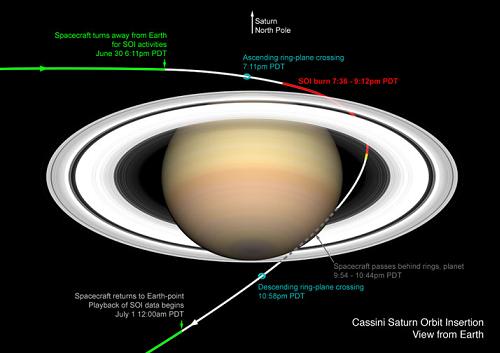You asked, the experts of "Scientific American" answered you
Matt Collins, Scientific American

Jeremy B. Jones, director of the Cassini spacecraft navigation team at the Jet Propulsion Laboratory (JPL) in Pasadena, California, explains:
The principles that underlie the gravitational assistance that spacecraft use to change their orbits also underlie the orbital changes that occur regularly between moons and smaller bodies in the solar system. Comets from outer regions, for example, are often thrown toward the inner solar system by the large planets, especially Jupiter.
In the absence of any other influence, a moon or spacecraft moves in an elliptical orbit around a larger body, called the main body, with constant orbital energy and angular momentum. But as a spacecraft approaches the moon also orbiting the same main body, the two smaller bodies exchange orbital energy and angular momentum. Since the total orbital energy remains constant, if the spacecraft gains orbital energy, that of the Moon decreases. There is a direct relationship between the length of the orbital cycle, which is the period of time required to complete one revolution around the main body, and the orbital energy. Therefore, when the spacecraft's orbital period lengthens (the slingshot effect), the moon's period shortens.
Since spacecraft are much smaller than moons, the effect on their orbit is much greater than their effect on the moon's orbit. For example, the mass of the Cassini spacecraft sent to Saturn is about 3,000 kg, while the mass of Titan, the largest of Saturn's moons, is about 10 to the power of 23 kg. The effect of a slingshot maneuver on Cassini is thus about 20 orders of magnitude greater than its effect on Titan.
A spacecraft passing "behind" the moon receives an increase in speed (and orbital energy) relative to the main body, which creates the appearance of a slingshot that throws it into a higher orbit. We can also fly the spacecraft "in front" of the moon to reduce its speed (and its orbital energy). Moreover, flying "above" or to the moon "below" allows changing only the direction of the spacecraft's movement, while changing the angle of the orbit (and the magnitude of the angular momentum). Flights flying in a combined trajectory allow changing both the energy and the angular momentum. All these adjustments cause, of course, an opposite change in the energy and angular momentum of the moon, but due to its greater mass the changes are so small that it is impossible to distinguish them among all the other forces affecting the moon's orbit.
The Cassini spacecraft that studies Saturn and its moons uses these moons to navigate around the planet. But in interplanetary flights, the Sun is used as the main body, and the gravitational assistance takes advantage of transits near the planets. This is how Cassini actually got to Saturn. – The editors
Scientific American website where you can also purchase a subscription to the journal
